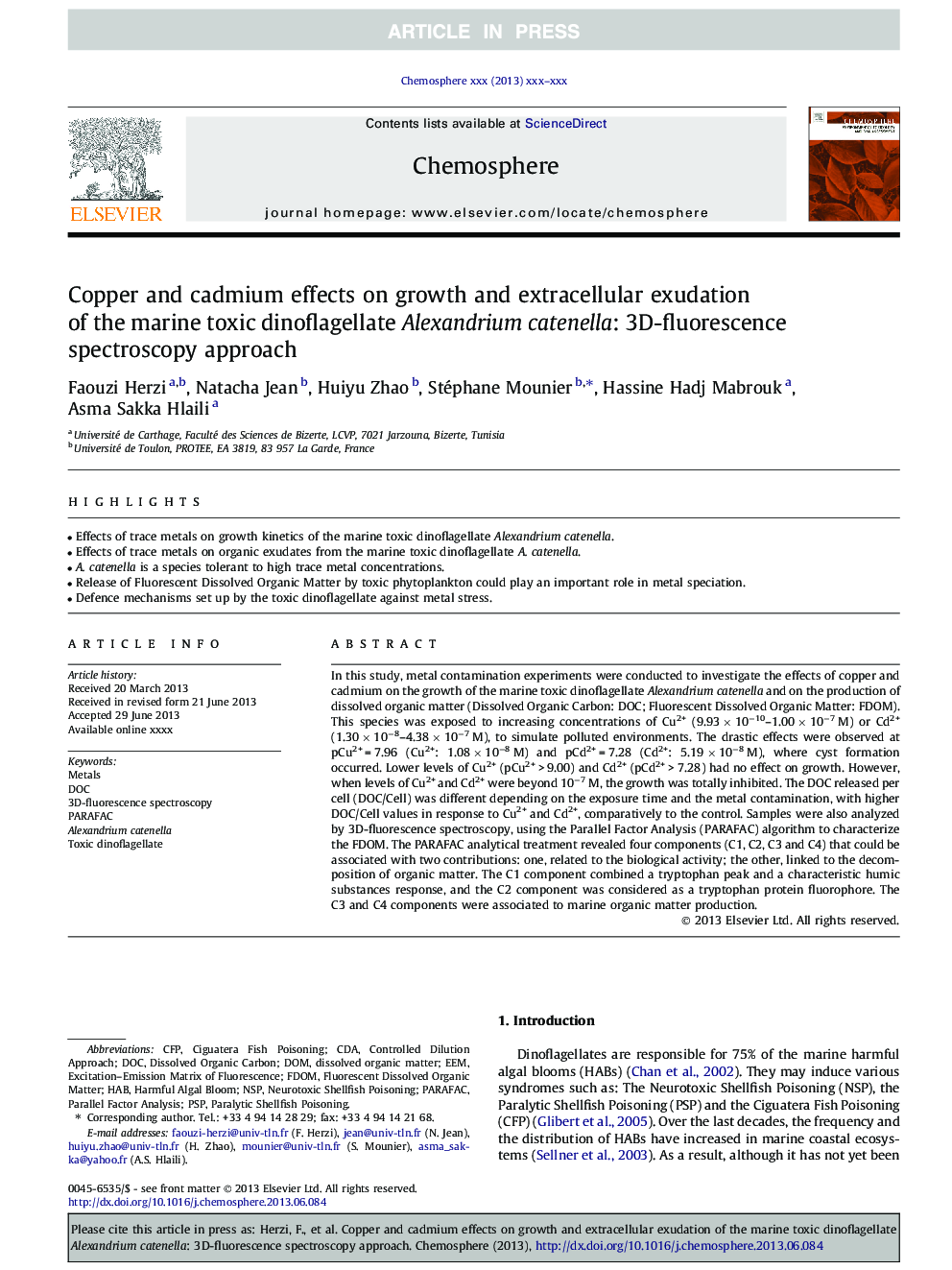| Article ID | Journal | Published Year | Pages | File Type |
|---|---|---|---|---|
| 6310386 | Chemosphere | 2013 | 10 Pages |
Abstract
In this study, metal contamination experiments were conducted to investigate the effects of copper and cadmium on the growth of the marine toxic dinoflagellate Alexandrium catenella and on the production of dissolved organic matter (Dissolved Organic Carbon: DOC; Fluorescent Dissolved Organic Matter: FDOM). This species was exposed to increasing concentrations of Cu2+ (9.93Â ÃÂ 10â10-1.00Â ÃÂ 10â7Â M) or Cd2+ (1.30Â ÃÂ 10â8-4.38Â ÃÂ 10â7Â M), to simulate polluted environments. The drastic effects were observed at pCu2+Â =Â 7.96 (Cu2+: 1.08Â ÃÂ 10â8Â M) and pCd2+Â =Â 7.28 (Cd2+: 5.19Â ÃÂ 10â8Â M), where cyst formation occurred. Lower levels of Cu2+ (pCu2+Â >Â 9.00) and Cd2+ (pCd2+Â >Â 7.28) had no effect on growth. However, when levels of Cu2+ and Cd2+ were beyond 10â7Â M, the growth was totally inhibited. The DOC released per cell (DOC/Cell) was different depending on the exposure time and the metal contamination, with higher DOC/Cell values in response to Cu2+ and Cd2+, comparatively to the control. Samples were also analyzed by 3D-fluorescence spectroscopy, using the Parallel Factor Analysis (PARAFAC) algorithm to characterize the FDOM. The PARAFAC analytical treatment revealed four components (C1, C2, C3 and C4) that could be associated with two contributions: one, related to the biological activity; the other, linked to the decomposition of organic matter. The C1 component combined a tryptophan peak and a characteristic humic substances response, and the C2 component was considered as a tryptophan protein fluorophore. The C3 and C4 components were associated to marine organic matter production.
Keywords
Related Topics
Life Sciences
Environmental Science
Environmental Chemistry
Authors
Faouzi Herzi, Natacha Jean, Huiyu Zhao, Stéphane Mounier, Hassine Hadj Mabrouk, Asma Sakka Hlaili,
